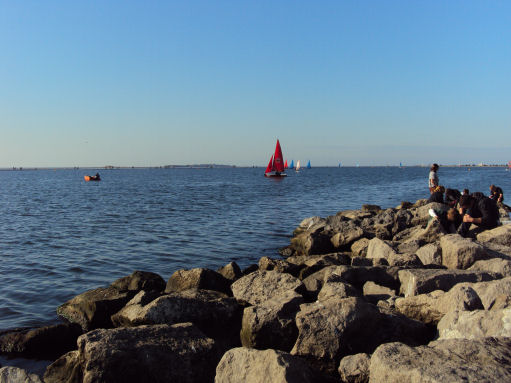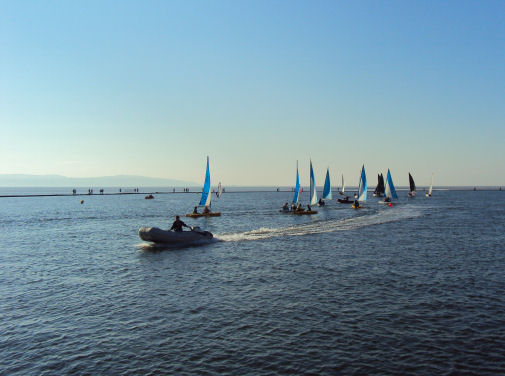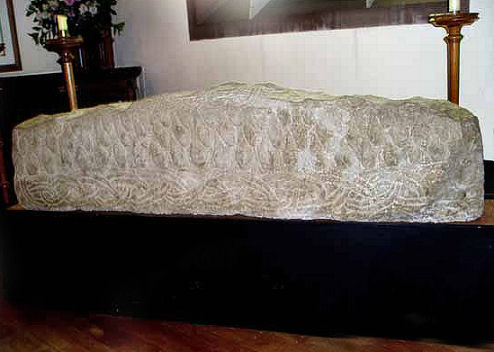West Kirby
OS grid ref:- SJ213869
The seaside town of West Kirby stands on the estuary of the River Dee at the northwest corner of the coast of the Wirral Peninsula. The name West Kirby is of Viking origin, originally Kirkjubyr, meaning 'village with a church'. The town was mentioned in the Domesday Book.

The pleasant town contains an elegant Victorian promenade, which is flanked by a marine lake, which has views out to Hilbre Island and the Dee estuary into North Wales. The views across to the Clwydian Mountains are superb on a clear day. At low tide it is possible to walk to Hilbre Island which is cut off from the mainland by the tide for up to four hours out of every twelve. Amenities for windsurfing, sailing and kayaking are available on the lake. West kirby beach has been awarded a coveted blue flag award.
The Marine Lake

Grange Road, The Crescent and Banks Road form the town's shopping centre. There are a good selection of pubs, retaurants, cafes, hotels and guest houses to suit all budgets. Ashton Park is a short walk from the town centre and can also be accessed from the Wirral Way. It's a starting point for walks across the sands to the Hilbre Islands Local Nature Reserve.
St. Bridget's Church
St. Bridget's church is the parish church of the town. The oldest remaining part of the building dates back to about 1150, the church tower is mainly sixteenth century, although built around an earlier core. Much of the east wall of the chancel and chapel date from the fifteeenth and sixteenth century.

The famous "Hogback" (the name Hogback referring to its curving shape) grave cover stone which is kept by the pulpit, It consists of hard grey sandstone, not a type of stone found locally and is of Anglo-Norse origin, the stone dates from the early eleventh century, to the time when the Wirral was settled by invading Vikings from Ireland, their legacy can still be read in the local place names of the area, many of which end with the Norse sufix 'by'.
The Viking Hogback Stone

The stone was unearthed during the course of restoration of the church in 1869-1870, on the site now covered by the aisle in which it stands. It is similar to other stones found in the north west of England, north Yorkshire, and southern Scotland. The popular generic description "Hogback" relates to the curving top of the stone, although the West Kirby example has been damaged in this area.
Nearby places of interest
Red Rocks Nature Reserve situated to the west of Hoylake and adjacent to the beautiful Dee Estuary and an important site for nature conservation on the Wirral Peninsula.
Thurstaston Common a popular spot with walkers for the superb views, at just 90m above sea level, it offers some of the best the Wirral has to offer, from the summit of Thurstaston Hill the views encompass the Dee Estuary and the hills of Wales.
Fort Perch Rock at New Brighton on the Wirral, is a coastal defence which was constructed built between 1825 and 1829. It was built to protect the Port of Liverpool and as a fortified lighthouse to replace the old Perch Rock Light.
Hilbre Island the largest of three tidal islands which lie at the mouth of the Dee Estuary on the Wirral. All three, Little Eye, Middle Eye and Hilbre, have been designated a Local Nature Reserve maintained by Wirral Borough Council.
Leasowe Lighthouse Constructed of hand made brick in 1763 by the Mersey Docks and Harbour Board, Leasowe Lighthouse on the Wirral Peninsula is the oldest brick built lighthouse in the United Kingdom.
